College of Human Sciences
Bridging the distance in distance education
Unisa’s Department of Communication Science is taking distance education teaching to an all new high having introduced interactive live broadcast classes to its students. Channelling new frontiers in digital teaching, the department has been using numerous communication tools for teaching purposes.
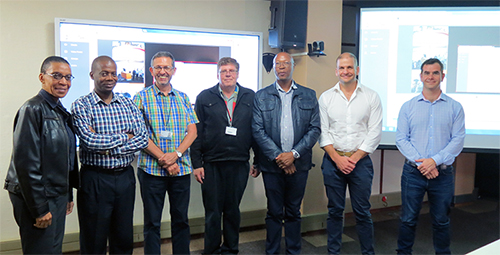
Prof Gugu Moche (Vice-Principal: Teaching, Learning, Community Engagement, and Student Support, Unisa), Dr Matome Mashiapata (Unisa), Prof Peter Havenga (Unisa), Prof Danie du Plessis (Department of Communication Science, College of Human Sciences), Prof Oupa Mashile (Unisa), Johann de Wet (Grove Group), and Travis Wade (Grove Group)
From the use of blogs, Twitter, satellite broadcasting, video conferencing and Skype, among others, the department now uses Open Broadcasting Software with live streaming from YouTube, and, more recently, Google Hangouts to bring the theory alive for their students.
Prof Danie du Plessis, who began using Google Hangouts late in 2016, said for too long, because of Unisa’s distance education methodologies, students have been isolated with impersonal material as resources. The aim, he said, is to provide large numbers of students with interactive classes that allow them to engage and influence the lecture and lecturer and other students.
Presenting the concept of Google Hangouts at a College of Human Sciences board meeting, Du Plessis said that Unisa’s purpose is to educate and skill people who will make a difference and change the world.
“Our teaching, research, and community engagement should all focus on making an impact and addressing real problems. By solving these problems we can have real impact. When we empower our students, thousands of them over a long time, with the skills, values and attitudes to tackle problems in our communities and society we will make a difference in the world of individual students. By empowering students that will contribute to better communities and society we can have a positive impact on the world and make it a better place to live in.”
Optimising teaching efforts
He said through the ages the main concern with distance education was the fact that there was no direct contact with students, so, in an attempt to optimise efforts, they began using various communication tools such as blogs, Twitter, satellite broadcasting, video conferencing, and Skype, among others, all of which form part of their department’s Digital Teaching Lab (DTL).
The most commonly used teaching tool is the Open Broadcasting Software (OBS) with live streaming from YouTube. A link is generated using JoinIn Application, which works in conjunction with OBS, and then shared with the students. The link takes students to a page that will grant them access to the live video broadcast stream. In this live stream, students are able to navigate different parts such as the Q&A section, which allows them to ask questions and also vote for them to make them high priority to the lecturer. At the same time, students are able to pause, rewind and forward during the live stream.
In addition to this method of teaching, Google Hangouts, because of its ability to reach a much larger group of students, is also becoming a tool of choice. According to Google, Google Hangouts is a unified communications service that allows members to initiate and participate in text, voice or video chats, either one-on-one or in a group. Hangouts are built into Google+ and Gmail, and mobile Hangouts apps are available for iOS and Android devices. This means that Unisa students can participate in these classes where ever they are located, as long as they have access to data, Wi-Fi and a smart phone.
Du Plessis said given the reach they could have with Google Hangouts, they collaborated with Google, Grove (Google premium partners) and developed the concept further by simplifying and enhancing the broadcasting process, interface, and the question-and-answer function.
“The result is that class can be attended from any device and from anywhere live or at any time, students attending a live class have the opportunity to ask questions, comment and influence the lecturer and lecture by using the tools, and students who could not attend live can also watch the broadcast afterwards and still join the discussion in the question-and-answer session, which will stay live if so preferred by the lecturer.”
First-year students experience it for themselves
Since they began using Google Hangouts, Du Plessis has done six live broadcasts for module COM3708, which saw an increase in the pass rate from 55 percent in the first semester to 76 percent in the second.
All first-time undergraduate students who are registered for formal qualifications experienced this tool on 20 February 2017 when they were invited to join a live session by accessing it from any smart device. The invitation was sent out to 61 457 students, some of whom joined the live session while others watched it later.
They were addressed by Prof Gugu Moche, Vice-Principal of Teaching, Learning, Community Engagement, and Student Support, and her academic and student support team, Prof Peter Havenga, Prof Oupa Mashile, and Dr Matome Mashiapata. During the live interactive session, the presenters explained to students on how to survive at Unisa and how to be successful in their studies.
The students also had the opportunity to provide feedback, ask questions, and complete a short online survey regarding the value of the event. The survey revealed that 82.8% of the students thought that the live broadcast was useful, 92.1% indicated that they would like to see more similar broadcasts in future and 95.8% indicated that they would like to see live broadcasts used for teaching modules.
Moche and her team explained that, since Unisa is a distance education institution, studying at the university might at first be an overwhelming experience as distance education required unique skills, attitudes, and learning approaches. The team assured the students that Unisa is committed to bridging the distance in distance education. Havenga explained the open, distance, and e-learning (ODeL) environment, while Mashile and Mashiapata explained student and staff management systems and emphasised the numerous student support systems available.
*Compiled by Rivonia Naidu-Hoffmeester and Janette Hanekom
Publish date: 2017-03-24 00:00:00.0
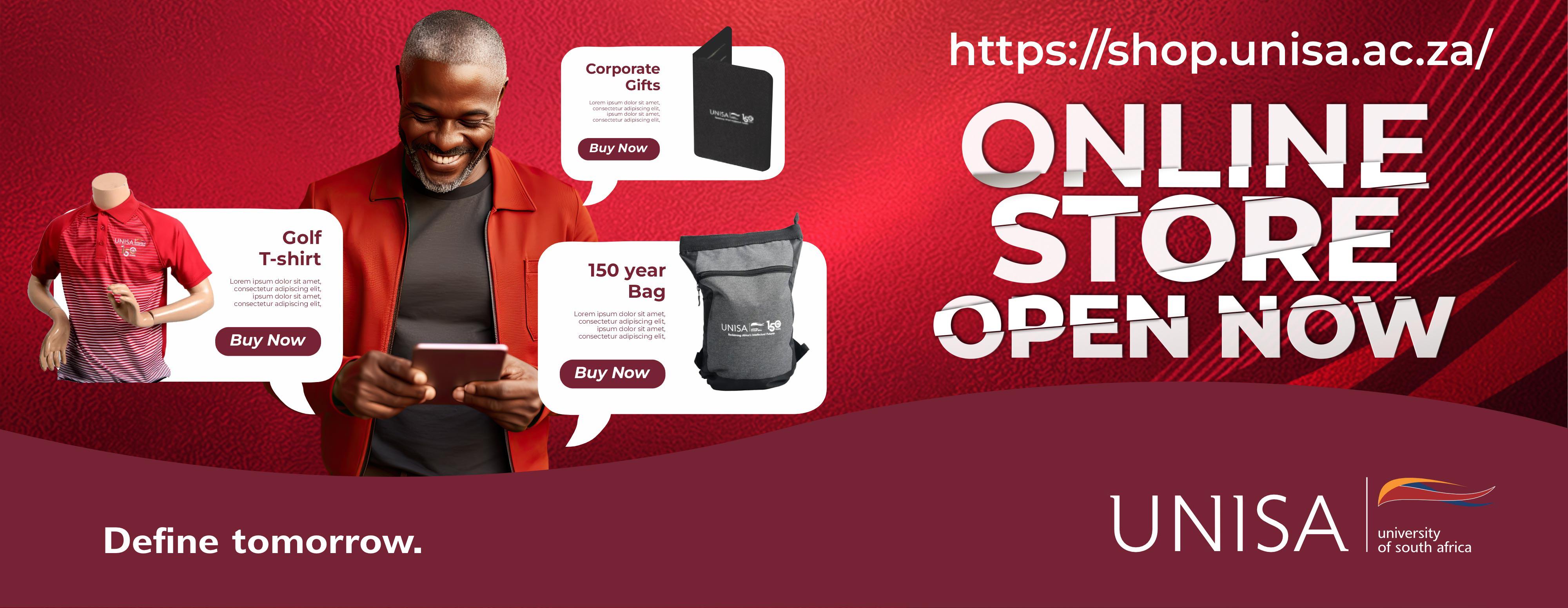
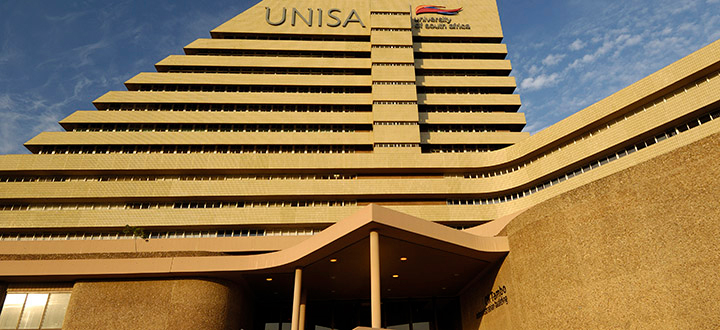 Unisa remains anchored among the waves
Unisa remains anchored among the waves
 Inhlanyelo Hub explores sustainable tourism initiatives in Marico Biosphere Reserve
Inhlanyelo Hub explores sustainable tourism initiatives in Marico Biosphere Reserve
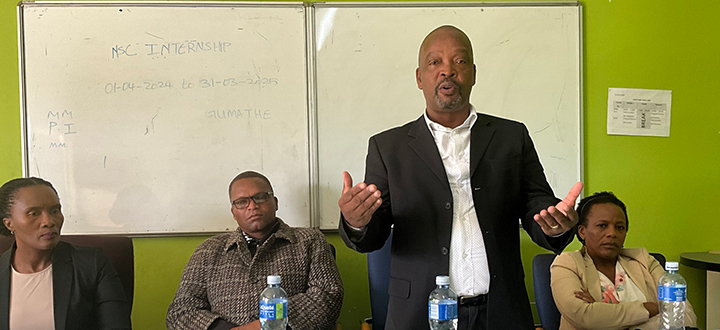 Unisa KZN Region explores extending university services to KwaMpungose community
Unisa KZN Region explores extending university services to KwaMpungose community
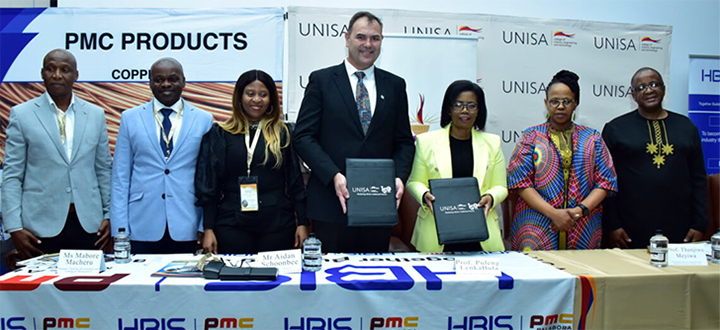 Unisa's catalytic niche areas provide industry-focused mining innovations
Unisa's catalytic niche areas provide industry-focused mining innovations